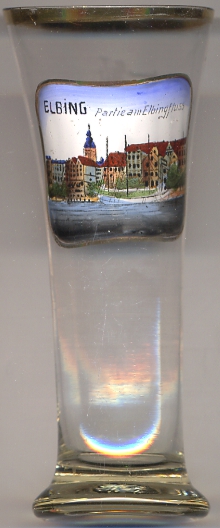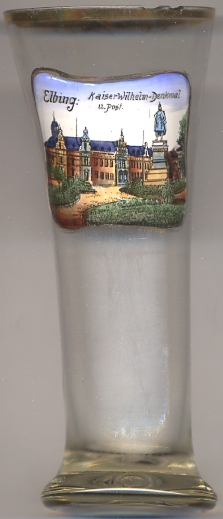

|
| POLSKA | POLAND |
| województwo: Warmińsko-Mazurskie | voivodship: Warmia and Masuria |
| miasto na prawach powiatu: Elbląg | city: Elbląg |
Elbląg is located about 55 kilometers south-east of Gdańsk and 90 kilometers south-west of Kaliningrad. The city is a port on the river Elbląg, which flows into the Vistula Lagoon about 10 km to the north, thus giving the city access to the Baltic Sea via the Russian-controlled Strait of Baltiysk. The Old Town (Polish: Stare Miasto) is located on the river Elbląg connecting Lake Drużno to the Vistula Lagoon. It is the capital of Elbląg County and has been assigned (since 1999) to the Warmian-Masurian Voivodeship. Previously it was the capital of Elbląg Voivodeship (1975–1998) and a county seat within Gdańsk Voivodeship (1945–1975). The municipality has a population of about 123,700 (2012).
 The settlement was first mentioned as Ilfing in 'The Voyages of Ohthere and Wulfstan', a late 9th century Anglo-Saxon
chronicle written in King Alfred's reign using information from a Viking who had visited the area. During the Middle Ages,
the Old Prussian settlement of Truso was located on Lake Drużno, near the current site of Elbląg in historical
Pogesania; the settlement burned down in the 10th century. Early in the 13th century the Teutonic Knights conquered the
region, built a castle, and founded Elbing on the lake, with a population mostly from Lübeck
(today the lake, now much smaller, no longer reaches the city). After the defeat of the Teutonic Knights and the destruction
of the castle by the inhabitants, the city successively came under the sovereignty of the Polish crown (1466), the Kingdom
of Prussia (1772), and Germany (1871). The Elbląg Canal (Oberländischer Kanal) from Deutsch Eylau
(Iława) via Osterode (Ostróda) to Elbing (Elbląg) and, via Lake Drużno
(Drausensee) and the river Elbląg, to the Vistula Lagoon was constructed in 1844–1860. Elbing was heavily
damaged in World War II, and its German citizens were expelled upon the war's end. The city became part of Poland in
1945 and was repopulated with Polish citizens.
The settlement was first mentioned as Ilfing in 'The Voyages of Ohthere and Wulfstan', a late 9th century Anglo-Saxon
chronicle written in King Alfred's reign using information from a Viking who had visited the area. During the Middle Ages,
the Old Prussian settlement of Truso was located on Lake Drużno, near the current site of Elbląg in historical
Pogesania; the settlement burned down in the 10th century. Early in the 13th century the Teutonic Knights conquered the
region, built a castle, and founded Elbing on the lake, with a population mostly from Lübeck
(today the lake, now much smaller, no longer reaches the city). After the defeat of the Teutonic Knights and the destruction
of the castle by the inhabitants, the city successively came under the sovereignty of the Polish crown (1466), the Kingdom
of Prussia (1772), and Germany (1871). The Elbląg Canal (Oberländischer Kanal) from Deutsch Eylau
(Iława) via Osterode (Ostróda) to Elbing (Elbląg) and, via Lake Drużno
(Drausensee) and the river Elbląg, to the Vistula Lagoon was constructed in 1844–1860. Elbing was heavily
damaged in World War II, and its German citizens were expelled upon the war's end. The city became part of Poland in
1945 and was repopulated with Polish citizens.
 St. Nicholas Cathedral [background] was established in circa 1247.
When the burghers of Elbing (Elbląg) first attempted to adopt the Protestant Reformation in 1525, the provost of St. Nicholas Church maintained Catholic practice.
Since 1539 the city council tacitly tolerated and gradually openly promoted Lutheranism, so that St. Nicholas Church had become a Lutheran church by 1573.
Following the Prussian regency contract (1605) of the Polish King Sigismund III Vasa with Elector Joachim Friedrich of Brandenburg and his Prussian enfeoffment contract
(Treaty of Warsaw, 1611) with Elector Johann Sigismund of Brandenburg these two rulers of Ducal Prussia guaranteed free practice of Catholic religion in prevailingly Lutheran Prussia.
Based on these contracts Prince-Bishop Szymon Rudnicki of Ermland/Warmia achieved the restitution of St. Nicholas as Roman Catholic parish church in 1612, then the only one in Elbing,
and remaining a Catholic church since. St. Nicholas was damaged by fire in the late 18th century, then destroyed in World War II and reconstructed. In 1992, the building was elevated
to the status of cathedral (Roman Catholic Diocese of Elbląg).
St. Nicholas Cathedral [background] was established in circa 1247.
When the burghers of Elbing (Elbląg) first attempted to adopt the Protestant Reformation in 1525, the provost of St. Nicholas Church maintained Catholic practice.
Since 1539 the city council tacitly tolerated and gradually openly promoted Lutheranism, so that St. Nicholas Church had become a Lutheran church by 1573.
Following the Prussian regency contract (1605) of the Polish King Sigismund III Vasa with Elector Joachim Friedrich of Brandenburg and his Prussian enfeoffment contract
(Treaty of Warsaw, 1611) with Elector Johann Sigismund of Brandenburg these two rulers of Ducal Prussia guaranteed free practice of Catholic religion in prevailingly Lutheran Prussia.
Based on these contracts Prince-Bishop Szymon Rudnicki of Ermland/Warmia achieved the restitution of St. Nicholas as Roman Catholic parish church in 1612, then the only one in Elbing,
and remaining a Catholic church since. St. Nicholas was damaged by fire in the late 18th century, then destroyed in World War II and reconstructed. In 1992, the building was elevated
to the status of cathedral (Roman Catholic Diocese of Elbląg).

The  monument for Emperor Wilhelm I [near left, no. 2816: foreground right]
was created in 1905 by the German sculptor Wilhelm Haverkamp. The monument was unveiled on 23 July 1905 in the presence of Empress Auguste Viktoria,
wife of Emperor Wilhelm II. The monument was destroyed in 1945.
monument for Emperor Wilhelm I [near left, no. 2816: foreground right]
was created in 1905 by the German sculptor Wilhelm Haverkamp. The monument was unveiled on 23 July 1905 in the presence of Empress Auguste Viktoria,
wife of Emperor Wilhelm II. The monument was destroyed in 1945.
(See also list of monuments for Wilhem I depicted on other glasses of this collection).
The building depicted in the background is the former
 Imperial
Imperial
[http://en.wikipedia.org/wiki/Elbląg;
http://en.wikipedia.org/wiki/St._Nicholas_Cathedral,_Elbląg;
https://de.wikipedia.org/wiki/Wilhelm_Haverkamp, https://de.wikipedia.org/wiki/Liste_der_Kaiser-Wilhelm-I.-Denkmäler;
http://wikimapia.org/22783062/pl/Urząd-Pocztowy-Elbląg-1;
https://de.wikipedia.org/wiki/Oberländischer_Kanal, https://en.wikipedia.org/wiki/Elbląg_Canal]
![[scale]](lineal.jpg)